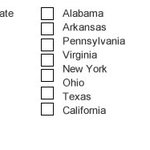- This article explains how to set and edit column widths in Adobe CQ5 CMS for your websites. This article assumes that you can edit the CSS and decide which grid or column framework to use for your website, dependent on the designs.
- The columns for this website (Mysite) are put into a group named Mysite.
- Each section in the template is separated in this file. The following different sections, marking the parsys in the template, are described below:
- main
- secondary
- For each parsys section, the "colctrl" is the column control area, and it defines the available layouts and the CSS style. For example, 3 Columns (25%, 25%, 50%)
3;grid-363 is the name of the column layout and the CSS class. (The column class is "grid-363", and the rest of the string above is the text that the content editor will see when they use the CMS to select a column.) The content editor will see the description for each column option to understand what column type to use in the parsys.
<level1 jcr:primaryType="nt:unstructured">
<main
jcr:lastModified="{Date}2013-01-06T10:45:25.586Z"
jcr:lastModifiedBy="admin"
jcr:primaryType="nt:unstructured"
sling:resourceType="foundation/components/parsys"
components="[group:Columns,group:Mysite]">
<section jcr:primaryType="nt:unstructured"/>
<colctrl
jcr:lastModified="{Date}2013-01-06T10:39:03.337Z"
jcr:lastModifiedBy="admin"
jcr:primaryType="nt:unstructured"
sling:resourceType="foundation/components/parsys/colctrl"
layouts="3;grid-333	3 Columns
4;grid-44	2 Columns
4;grid-2222	4 Columns"/>
<col_end13242935548710
jcr:primaryType="nt:unstructured"
sling:resourceType="foundation/components/parsys/colctrl"
controlType="end"/>
</main>
<secondary
jcr:lastModified="{Date}2013-01-06T10:46:16.990Z"
jcr:lastModifiedBy="admin"
jcr:primaryType="nt:unstructured"
sling:resourceType="foundation/components/parsys"
components="[/libs/foundation/components/flash,group:Columns,group:Mysite]">
<section jcr:primaryType="nt:unstructured"/>
<colctrl
jcr:lastModified="{Date}2013-01-06T10:38:52.144Z"
jcr:lastModifiedBy="admin"
jcr:primaryType="nt:unstructured"
sling:resourceType="foundation/components/parsys/colctrl"
layouts="2;grid-66	2 Columns (50%,50%)
2;grid-93	2 Columns (75%, 15%)
2;grid-39	2 Columns (15%, 75%)
2;grid-48	2 Columns (40%, 60%)
2;grid-84	2 Columns (60%, 40%)
3;grid-633	3 Columns (50%, 25%, 25%)
3;grid-336	3 Columns (25%, 25%, 50%)
3;grid-363	3 Columns (25%, 50%, 25%)
3;grid-444	3 Columns (33%, 33%, 33%)
4;grid-3333	4 Columns (25%, 25%, 25%, 25%)"/>
<col_end13243732957980
jcr:primaryType="nt:unstructured"
sling:resourceType="foundation/components/parsys/colctrl"
controlType="end"/>
</secondary>
</level1>



Leave a comment